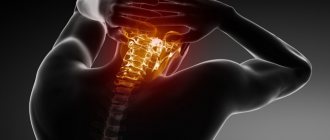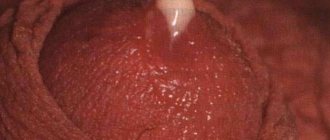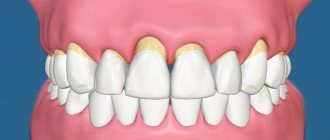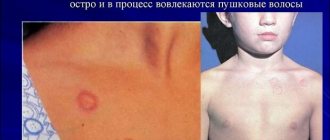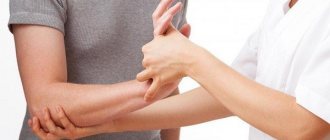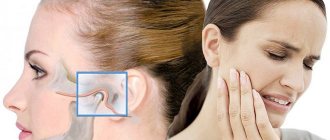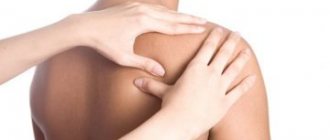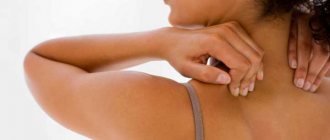Every person has experienced discomfort caused by headaches. Sometimes the headache is so severe that it interferes with everyday life. The person becomes nervous and reacts sharply to any irritants.
The severity and duration of the headache depend on the cause of its occurrence. This article will help you identify this cause and understand what to do if you have a headache.
Main causes of headaches
Doctors say that only in 10% of cases headaches occur due to diseases of the head itself. The main sources are deviations in the functioning of other organs of the body. Below are the most common causes of discomfort in the head area.
Provoking factors
Often, periodic headaches are not associated with serious illnesses, but are caused by external irritants. Factors that trigger migraines include:
- Improper routine and poor sleep
- Frequent stress and anxiety
- Eating too little or too much food
- Strong physical activity
- Overheating or hypothermia of the body
- Frequent drinking and smoking
Another factor is the individual reaction of each organism to weather changes. Weather dependence is the most common cause of migraines in most people.
Contraindications
Any natural component has its positive aspects, but is not always without its disadvantages. Before starting health activities, you should consult your doctor. You will have to abandon traditional recipes in such situations:
- allergies to components;
- oncology;
- blood pathologies;
- pregnancy and breastfeeding (not always);
- some diseases of the internal digestive organs.
Medicinal plants in the form of prescriptions for headaches most often provide good results. These remedies are combined with medications and help improve their absorption. However, it is undesirable to use such products independently or to abuse the compositions.
Diseases and localization of pain
Chronic headaches can indicate serious illnesses. Depending on the location of the pain, we can draw a conclusion about the type of disease.
Pain in the temple area
Most often, painful sensations in the temples occur due to pressure changes. However, we should not exclude problems such as:
- Impaired blood circulation.
- Infections and viruses. Pain in the temples is one of the first signs of a cold or flu.
- Pain in the facial area (problems with teeth, broken nose, etc.) can cause discomfort in the temples.
- Changes in hormonal levels due to pregnancy, menopause or puberty.
Important information
In each of the cases presented above, specialist consultation and medical examination are necessary.
Pain in the back of the head
Such pain does not appear without serious reasons and indicates serious health problems.
Painful sensations in the back of the head and neck simultaneously indicate osteochondrosis. Sometimes pain manifests itself in the temporal region. This is due to the destruction of the discs of the cervical vertebrae. Typically, osteochondrosis is accompanied by the following symptoms with sudden head movements:
- Darkening in the eyes.
- Problems with coordination.
- Nausea and vomiting.
- The appearance of tinnitus.
With osteochondrosis of the cervical spine, pronounced pain is observed that is constant.
Another cause of pain in the back of the head may be hypertension. Most often, unpleasant sensations appear after sleep. In this case, throbbing pain is combined with tachycardia, weakness throughout the body and frequent dizziness.
With inflammation of the neck muscles associated with injuries, pain is transmitted from the back of the head to the shoulders and affects the area between the shoulder blades. It manifests itself with sudden movements of the head.
Throbbing pain after sleep in the early morning, moving from the back of the head to the forehead, indicates vascular diseases in the cranial region. It is not felt in a calm state and appears during movement.
Forehead pain
A headache in the forehead also indicates serious illness. These include:
- Sinusitis, in which the mucous membrane of the maxillary sinuses becomes inflamed. With sinusitis, in addition to pain in the head, there is constant nasal congestion.
- Inflammation of the frontal sinus, which is called frontal sinusitis, a painful sensation occurs in the morning and goes away only after clearing the sinuses. In severe cases of frontal sinusitis, operations are performed and antibiotics are prescribed. In the early stages, you can get by with vasoconstrictor drops, inhalations and heating.
- Pneumonia, influenza, and malaria can cause throbbing pain. It is also accompanied by general weakness, muscle pain and fever. With malaria, the pain can be sharp.
- Acute meningitis is a disease in which there is severe headache in the forehead and nausea or vomiting.
Pain in the eye area
In most cases, eye pain occurs due to pain in the forehead area. Often headaches in the eyes are associated with overwork at work. Fortunately, you can cope with this illness on your own, simply by giving your body a rest. But sometimes the causes of pain in the eye area can be much more serious. So, these may include:
- Concussion. The first symptom of such injuries is headache in the eyes and forehead. Treatment should only take place under the strict supervision of a physician.
- Eye problems. Farsightedness and nearsightedness can cause pain. This occurs due to severe tension in the eyeballs. In this case, properly selected glasses will help.
- With a disease such as glaucoma, a person painfully tolerates bright light. Its outbreaks can cause nausea and vomiting. In advanced cases of glaucoma there is a risk of vision loss.
Etiology
The causes of headaches may include the following:
- spasm of arterial vessels;
- hypoxia;
- high blood pressure (observed in the back of the head);
- excessive tension in the muscles of the head and neck;
- the development of certain pathological processes that affect nerve endings;
- sudden change in weather conditions;
- ARVI, influenza;
- excessive physical activity;
- starvation;
- stress, nervous tension;
- injuries;
- hypokinesia;
- osteochondrosis of the cervical spine;
- chronic pathologies of the sinuses – sinusitis, sinusitis.
In addition, headaches are often observed during pregnancy, which is due to changes in the functioning of the body and an increase in the load on some systems.
It should be noted that these are not all etiological factors in which cephalalgia is observed. In any case, if a person is bothered by frequent headaches, he should consult a doctor and not take medications without permission. It is likely that this symptom is one of the signs of the clinical picture of a certain illness. Ignoring this factor can lead not only to the development of complications, but also to death.
We should not forget that headaches from overexertion, overwork or lack of sleep are possible. In this case, you should simply reconsider your regime and make appropriate adjustments. Otherwise, concomitant diseases may develop.
What to do if you have a headache
Many people prefer to treat headaches with medications. This option is not always effective, since most medications only relieve discomfort, but not the cause itself. A safe way is to use folk remedies. However, to get rid of the source of the problem, you need to be examined by a specialist. Below we will look at the main ways to treat headaches.
Headache tablets
If the pain is not chronic and caused by external factors, getting rid of it will not be difficult. In such cases, conventional analgesics are used. The safest drugs are considered to be tablets based on ibuprofen or paracetamol. These can be considered:
- Citramon. In addition to the above-mentioned components, the composition contains caffeine. It stimulates the central nervous system. The medicine helps well with fatigue and decreased cerebral vascular tone.
- Aspirin. The drug not only gently relieves headaches, but also helps improve well-being during colds.
- Analgin is a tablet that is suitable for eliminating symptoms on the first day before prescribing therapy. The medicine quickly relieves pain due to colds and flu.
- Paracetamol is a good drug for long-term treatment. Helps get rid of not only pain, but also fever. Relieves symptoms of viral diseases and toothache.
For pain due to high blood pressure, analgesics may not be helpful.
When taking medications for headaches, you must follow these rules:
- You should not combine medications with alcohol, as there is a risk of kidney and liver dysfunction.
- Codeine-based tablets are contraindicated for motorists, since the presence of this drug in the blood can be perceived as a state of drug intoxication.
- Painkillers should not be used for more than 5 days.
- The combination of several types of analgesics is strictly prohibited due to their negative effects on the stomach and intestines.
Treatment without pills
If you don’t have painkillers on hand and you can’t go to the pharmacy, you should try the following methods to get rid of headaches.
- You need to drink 1-2 glasses of strong tea or sweet juice for headaches due to a hangover. An infusion of dried fruits is also suitable. Due to stress, the body needs a portion of glucose, which is contained in such drinks.
- You can tightly cover your open eyes with your palms and look at them for half a minute. After this, you need to close your eyes and remove your hands. Then you need to carefully open your eyes, blink several times, close your eyes tightly and finally open them wide. This exercise will help relieve tension from the eyes and head.
- Between the thumb and index finger there is a nerve responsible for pain relief. It should be massaged periodically, and then the headache will no longer bother you.
In addition to the proposed methods, you can practice a head massage or a small warm-up for the neck. If you have migraines due to long-term work in the office, it is important to periodically go out into the fresh air or ventilate the room.
Folk remedies
It is possible to relieve pain without medications. In folk medicine, there are many remedies for headaches. Below are the most effective of them.
- For the first recipe, you need to chop 50 g of fresh ginger and pour half a liter of hot water over it. Leave to infuse for 1 hour. It is recommended to take this infusion 3 times a day, a third of a cup.
- Pour two tablespoons of dry chamomile into a glass of water and cook over low heat for about 5 minutes. You can add honey or lemon to the finished broth. Chamomile has a calming effect and will quickly relieve headaches.
- Pour 2 tablespoons of apple cider vinegar and 1 tablespoon of honey into 1 glass of water. The drink just needs to be drunk at one time. The intensity of painful sensations will decrease significantly.
- You can also make compresses from apple cider vinegar. To do this, mix 1 liter of cold water with 1 teaspoon of vinegar and 1 teaspoon of salt. Soak a piece of natural fabric in the solution and apply to the forehead for 5-10 minutes.
- Hawthorn infusion is good for pain and dizziness. It is very simple to prepare: pour 20 g of hawthorn fruit with a glass of water and boil over low heat for 10 minutes. Take the decoction on an empty stomach.
Important information
If you are allergic to the components included in the recipes, you must stop using them and choose other remedies.
Symptoms
The clinical picture of headaches depends entirely on the etiology of the disease. Each group of cephalalgia is characterized by specific manifestations. Common symptoms include:
- general weakness;
- poor appetite;
- irritability;
- nausea;
- ear plugging;
- photophobia;
- a cold that causes a stuffy throat.
Headaches caused by muscle tension are characterized by the following clinical picture:
- discomfort in the forehead, temple and back of the head;
- a feeling of compression on the frontal surface of the skull;
- weakness;
- temperature;
- insomnia.
The cluster symptom is most often diagnosed in representatives of the stronger sex and has a one-sided manifestation:
- headache in the temple, sometimes in the neck;
- attacks are repeated throughout the day;
- The severity of the symptom is short-lived - about 5 minutes.
How to treat a headache if it is accompanied by uncharacteristic specific manifestations? It is imperative to find out the cause of the pathology, and then direct efforts to eliminate it.
Prevention
Headaches may occur due to poor diet or disturbed sleep. In order to understand why it occurs, you need to keep a diary. It should note what food was eaten during the day, the time of going to bed and the days on which the head hurt. This way it will be possible to draw a conclusion about the connection between painful sensations and lifestyle. It is also necessary to note critical days in a woman’s diary, since pain may be associated with them.
To prevent migraines from tormenting, it is important to get enough sleep and often be in the fresh air. Physical activity and giving up bad habits will be beneficial. It is important to avoid stress and conflict situations. It is advisable to eat small portions 6 times a day. It is important to exclude fatty, fried and very spicy foods from your diet.
You also need to undergo periodic medical examinations to rule out serious illnesses.
Diagnostics
Diagnosis of the cause of headaches depends on the general health of the patient and the suspected provocateur of the symptom. At the clinic, the patient is prescribed:
- a thorough physical examination;
- collection of general anamnesis;
- modern instrumental and laboratory examination methods;
Recent events include:
- analysis of the patient's blood and urine;
- CT or MRI;
- Ultrasound;
- X-ray.
How to treat a headache can only be determined by a doctor after a thorough examination and identification of the etiology of the disease. The specialist will tell you what to do, what proper set of measures must be taken to relieve the symptom in order to quickly get rid of the discomfort.
It is undesirable to use advertised medications without permission, otherwise you may encounter serious complications.
When to see a doctor immediately
You need to seek help from specialists if headaches do not go away for more than 3 days, and there is no explanation for this process in the form of fatigue or stress. You should also sound the alarm if the unpleasant sensations are accompanied by other, no less dangerous symptoms:
- increased body temperature;
- nausea and vomiting that does not bring relief;
- limb spasms;
- an allergic rash occurs on the body;
- numbness of hands and feet;
- increased blood pressure;
- dizziness;
- clouding of mind;
- lack of coordination;
- loss of consciousness.
It is worth calling a doctor if the symptoms begin after an injury, or occur at night, or if they intensify with each attack. If we are talking about migraine, its manifestations must be stopped with painkillers. But if taking pills does not help within a few days, this also becomes a reason to consult a neurologist.
Caffeine needle
We have already mentioned abuse headaches, which occur when you stop taking your usual pills. The same thing happens to the body when you give up any other “drug” - coffee, soda or tea. The body reacts to a sharp withdrawal from such dopings with throbbing headaches in the temporal regions, weakness, irritation, absent-mindedness, anxiety, fear, sleep disturbance and nausea.
What to do? Along with following a balanced diet with the exclusion of harmful foods, try herbal medicine and kinesiotherapy.
Vegetative-vascular dystonia
The pain throbs in the temples, the general condition is broken, the face looks swollen, as if you had been partying all night. The pain can cover two parts of the head at once, radiating to the back of the head, forehead, temples, and eyeballs. Most often, headaches with VSD occur in the morning or at night.
Often such pain occurs when the weather changes; in women it is associated with the menstrual cycle. Maybe your blood vessels are spasming or your blood pressure is jumping sharply - with VSD, the headache is secondary and most often serves as a sign of a malfunction in the central and autonomic nervous system.
What to do? Eliminate caffeine from your diet, go swimming, make a wet compress and study a set of procedures.
- Using the pads of your outstretched fingers, press horizontally on the neck muscles at the level of the hairline
- Connect your index and middle fingers. Massage from below with short circular movements the point where you feel the bones of the skull begin. To feel it, tilt your head back - it will be somewhere on the fold line.
- Connect your index and middle fingers. Massage from above with short circular movements the point where you feel the bones of the skull begin. To feel it, tilt your head back - it will be somewhere on the fold line.
- Place your fingers on the neck muscles that hug the line of the spine. Press with your fingertips in a gripping motion, varying the intensity.
Back to contents
Causes
It is quite difficult to establish the main cause of pain in the head, since there are many of them. Only a person suffering from frequent migraines can understand through his own observations what exactly causes these sensations.
It is still worth highlighting the main reasons, among them we note:
- high blood pressure;
- high body temperature with acute respiratory infections;
- sinusitis;
- alcohol abuse, smoking, drug use;
- weather;
- cervical osteochondrosis.
In general, there are enough causes and types of this disease, but you can get rid of them at home. This is a great opportunity to stop taking medications that may cause side effects.
On a note! Traditional methods have contraindications. Before any independent treatment, you need to get a doctor's opinion.
Trigeminal neuralgia
You recognize this pain as a short but excruciating flash that appears in any area of the face completely suddenly. The attack interval is from 10 seconds to 2 minutes, and no pills will help - you just need to wait it out. Facial muscles may contract convulsively and uncontrollably, and pain points may migrate from attack to attack.
This is how the trigeminal nerve is affected due to caries, stomatitis and even malocclusion. Potentially, no one is immune from such attacks. The pain comes from the bottom of the jaw, in the neck and chin, if the lower jaw branch is affected, and if it radiates to the nose area, then also the upper jaw branch.
The most severe pain appears when the eye area is also involved, along with the temples, forehead and eyebrows.
What to do? Urgently go to the doctor, because the causes of the disease can be very different - dental diseases, impaired metabolism, cerebral aneurysm, and more.
Back to contents
Classification
The classification of cephalgia was officially adopted in 2004. The International Medical Council has adopted a huge multi-level list that lists all types of headaches and their symptoms. But the first attempt to make any classification was made by American doctors in 1952. We will look at different types of headaches and their causes, and the symptoms of the main ones.
Experts in the field of neurology distinguish 2 main types - primary (migraine and cluster pain) and secondary - when the root cause is inflammation in the body. Let's start our review of the types of cephalalgia with pain due to overexertion - every person on the planet has experienced this pain at least once.
Drug treatment of cephalgia
Severe spasms, regardless of their cause and etiology, cannot be endured without taking any measures; in case of intolerable syndrome, painkillers should be used. Depending on the type of cephalgia and its etiology, the following drugs are indicated:
- "Paracetamol". A gentle antipyretic, pain-relieving medication, approved for use by children and women in an “interesting” position. It removes moderate spasms caused by infectious or cold pathologies, inflammation.
- "Migrenol." A combination drug in which the active ingredient, paracetamol, is supplemented with caffeine. The medicine is allowed to be used by hypotensive patients to eliminate the pathological syndrome caused by changing weather conditions, migraines, VSD, and low blood pressure.
- "Solpadeine." Anti-spasm product with caffeine and codeine. How to get rid of pain with their help is described in detail in the instructions. But the doctor can prescribe his own regimen of the drug depending on the course of the syndrome and the presence of chronic pathologies. The medicine is indicated for use for severe spasms.
- "Analgin." An effective painkiller will quickly relieve painful discomfort, but with prolonged use it has a negative effect on the blood, inhibiting the reproduction of white blood cells.
- "Sedalgin Plus". An analgesic containing the beneficial substance B1, caffeine. The medicine quickly relieves attacks caused by low blood pressure, migraines, emotional stress, chronic fatigue and colds.
- "Ibuprofen." The remedy can make severe pain less pronounced. It is used to treat cephalalgia of various origins.
- "Spazmalgon." Analgesic with spastic action. The drug is recommended for syndrome developing against the background of vascular spasms.
- "Brustan". A combination medication that combines two components - ibuprofen and paracetamol. Used to eliminate severe discomfort when other medications are not effective.
How to calm a headache, because constantly using medications and combining them with alcoholic drinks is not recommended. The doctor must prescribe a specific medicine and its dosage, depending on the severity of the syndrome and the individual reaction of the patient.
For severe headaches, you should take painkillers
